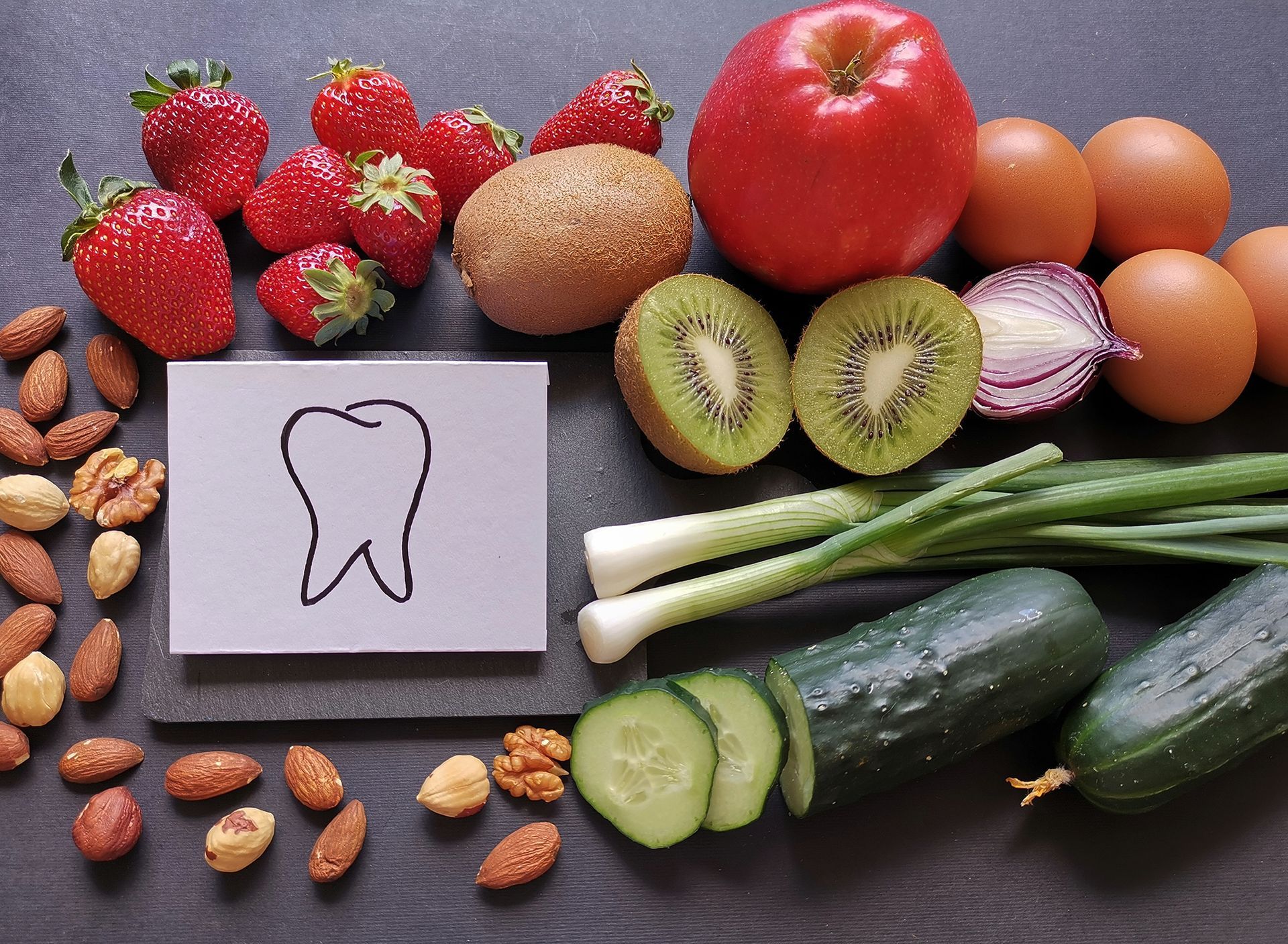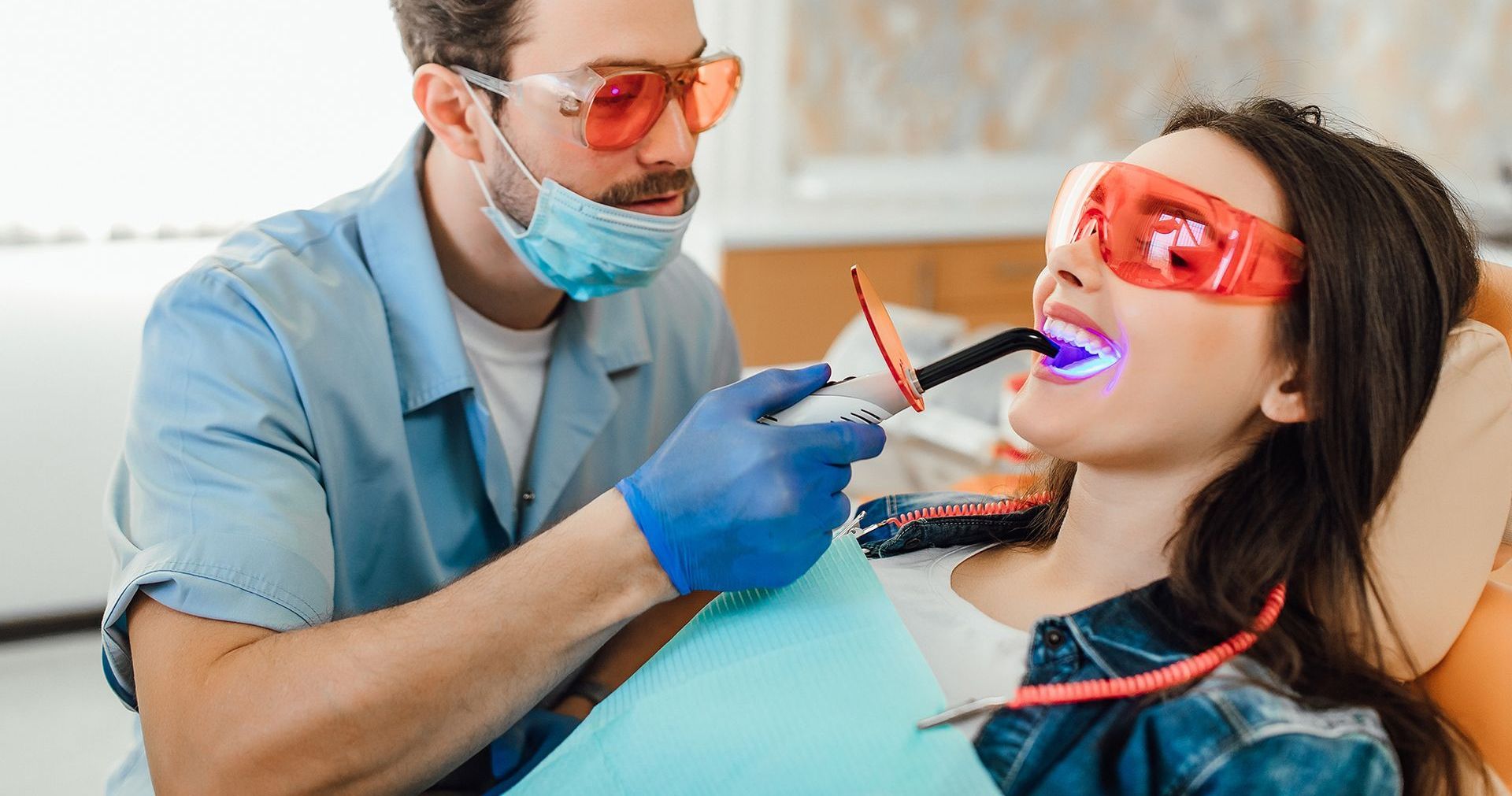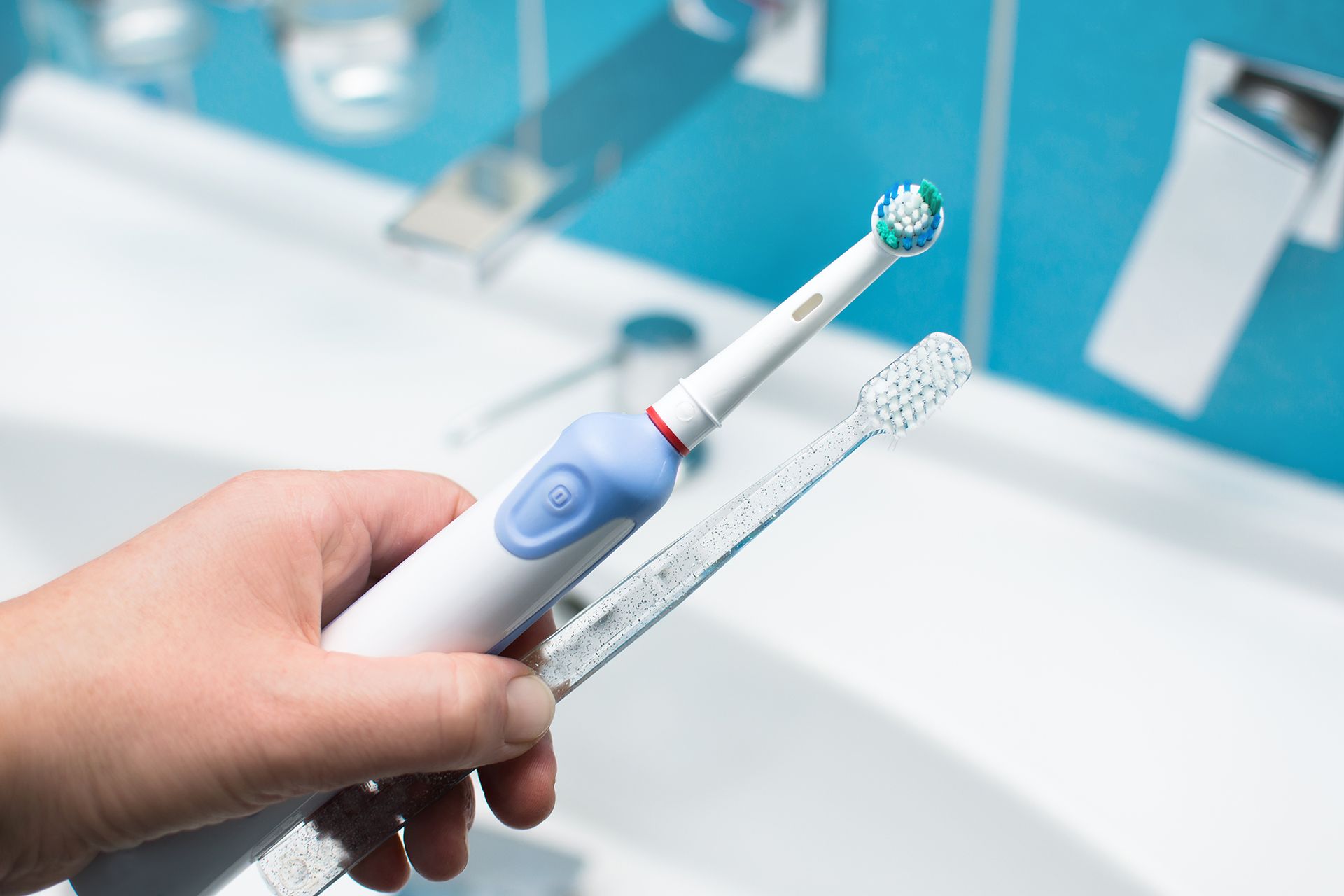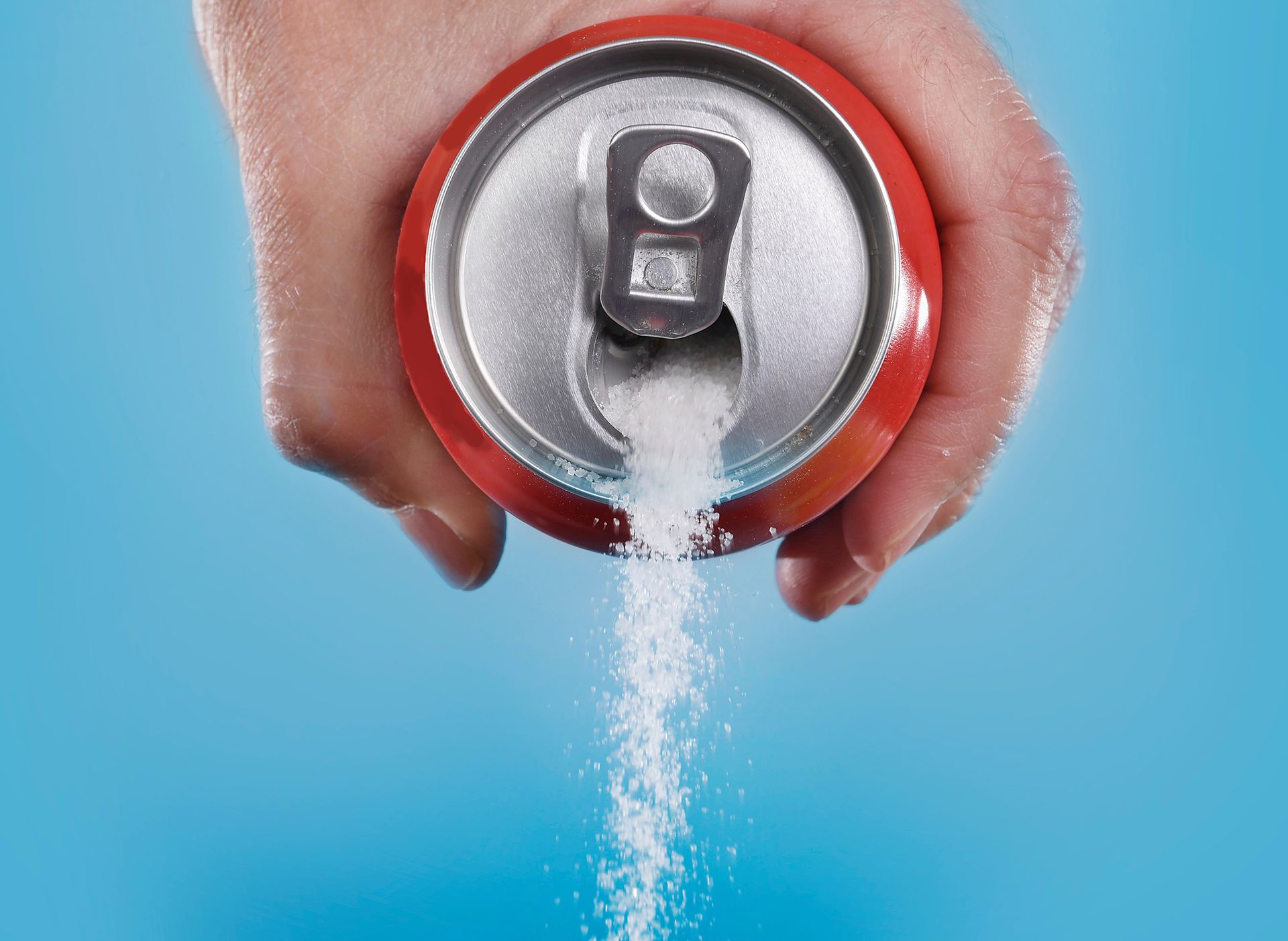

By Sondra Brady
•
12 Jan, 2023
February is Gum Disease Awareness Month. Gum disease is an infection of the gums that is typically caused by poor oral hygiene. Although this condition can potentially cause tooth loss, the early stages are often painless. Therefore, individuals can live with gum disease for years without noticing any symptoms. Attending annual exams gives your dental team an opportunity to catch gum disease as early as possible and help stop its progression. Symptoms of Gum Disease: Bleeding gums Red gums Receding gums Swollen gums Bad breath Foul taste in mouth Loose teeth Changes to bite alignment Change in partial denture fit Gingivitis Gingivitis is the first stage of gum disease and the simplest to treat. Patients with gingivitis may have red, swollen gum that bleeds easily. However, many gingivitis patients are unaware of their condition until receiving a formal diagnosis. This stage of gum disease is often reversible with proper care. Treatment for gingivitis often includes professional hygiene cleanings, prescription mouthwash or toothpaste, and excellent daily oral hygiene. Periodontitis Periodontitis is an advanced stage of gum disease. According to the Centers for Disease Control and Prevention, periodontitis affects 47% of US adults over age 30. If left untreated, this condition can cause tooth and bone loss. Gum disease is known for its slow progression, but rapid periods of advancement can occur. Professional dental hygiene cleanings, medications, and surgery are effective treatment methods for periodontitis patients. It is also essential for patients with periodontitis to commit to a diligent oral hygiene routine to manage their condition. Risk Factors for Gum Disease: Tobacco use Diabetes Poor oral hygiene Pregnancy Genetics Certain medications Although there is no conclusive link between periodontal disease and systemic diseases, research has collected data to support that gum disease may be associated with certain health conditions, including heart disease, diabetes, Alzheimer’s disease, cancer, respiratory disease, and stroke. Prevention Exceptional at-home oral hygiene and regular preventative dental care are the most effective methods to prevent gum disease. Your daily oral hygiene routine should include brushing your teeth twice a day for two minutes, cleaning the tongue twice a day with a brush or tongue scraper, and flossing daily. In addition, ensure you receive a professional dental cleaning twice a year and at least one dental exam annually. If we detect any signs of gum disease at your preventive visits, we will design a treatment plan to stop the progression and avoid chronic side effects.

By Sondra Brady
•
12 Dec, 2022
Denture-wearers should pay close attention to their nutrition intake. Research found that denture patients have lower nutrition markers than before using dentures. Dentures could impact nutrition more than patients may realize. Since dentures do not have the same chewing efficiency as natural teeth, many patients have to alter their regular eating habits when they start using dentures. Dentures are a valuable oral appliance that has allowed countless patients with tooth loss to regain oral function. Humans have been using denture-like appliances to counter tooth loss for decades. The earliest record of dentures dates back to the 7th century. These ancient oral appliances used animal or human teeth. Denture technology has made leaps and bounds in the last decade. Not only do modern dentures beautifully restore patients' smiles, but they also create a stable chewing surface. Denture-Users Have Lower Nutrition Markers Patients who have had their dentures for two years have significantly lower nutrition markers in certain areas than before using dentures, according to a recent study published by the Journal of Prosthodontics. Patients who recently started using dentures should monitor their nutrition levels to prevent malnutrition. Poor-fitting dentures greatly contribute to lowering nutrition levels. It is much more difficult to chew food when the chewing surfaces are unstable. This instability often results in patients avoiding eating foods that are difficult to eat, such as fruits, vegetables, and whole grains. Avoiding these vital food groups causes patients to miss out on key nutrients. Denture-Friendly Nutrient-Rich Foods: Eggs Cottage cheese Broiled fish Meatloaf Applesauce Soft fruits (bananas, melons & berries) Oatmeal Potatoes Pasta Rice Tips to Eat with Dentures Successfully: Sit down for meals: Rushing through meals often results in not chewing food thoroughly. It is a good idea to sit down and diligently chew to get the full nutritional benefits of a meal. Cut food into small pieces: The smaller pieces you cut your food into, the less power is needed by your jaws to break down the food. Have a beverage with meals: Cereal and whole grain bread are staples in the American diet, but they often stick to the teeth. Eating with liquids makes it easier to chew and swallow these foods. Chew on both sides of the mouth evenly: Humans naturally chew on their dominant side. Right-handed people generally chew on the right side of their mouth, and left-handed people chew on their left. Chewing evenly on both sides of the month takes conscious effort but is particularly beneficial for denture-wearers. Avoid tough meats: Red meat can be too tough for some individuals to eat with dentures. Poultry, fish, eggs, and legumes are softer and easier to chew. Although, you can still enjoy red meat with dentures if you prepare it correctly. Try slow-cooking red meats or incorporating them into a stew. Stay away from sticky & chewy foods: Sticky foods such as caramel, taffy, peanut butter, and dried fruit can stick the molars and dislodge the denture out of place. You can still get in all the essential nutrients your body needs with dentures; it just requires a little extra planning. Schedule an appointment if you can not enjoy certain foods because of poorly fitting dentures. We will ensure your dentures fit comfortably so you can live a happy, healthy life.

By Sondra Brady
•
17 Oct, 2022
Filling a cavity is supposed to stop tooth pain, right? But what if you are still experiencing sensitivity after your treatment? Sensitivity is a common side effect of dental fillings that typically alleviates quickly after the procedure. Extreme discomfort is not normal and needs to be addressed by a dental professional promptly. Call your dental provider immediately if you are experiencing severe pain accompanied by fever or swelling after a dental filling treatment. Dental Fillings 101 Dental fillings are one of the most common procedures in dentistry. In this routine treatment, the dentist will inject an anesthetic near the tooth to numb the area. Then, the dentist will use a dental drill to remove any decay present in the area and fill in the carved-out space with a dental restoration material. Fillings can be made of gold, porcelain, amalgam (silver), or tooth-colored composite resin depending on the patient’s budget and aesthetic desires. Sensitivity After a Filling It is common for patients to experience some sensitivity in the area once the anesthetic that was applied before the filling wears off. The sensation is typically described as a sudden rush of pain or cold that subsides quickly. Certain environmental factors are known to trigger or heighten the tooth’s sensitivity. Common Tooth Sensitivity Triggers Hot, cold, acidic, or sugary foods and beverages Cold air or wind Pressure from biting down or eating Severe pain is not a typical side effect of dental fillings. If your pain is interfering with your daily life, do not suffer silently. Your pain could be a symptom of a serious condition that needs to be addressed by a dental professional. Although uncommon, extreme discomfort after a filling could be an indication of the following conditions: Irritated Nerve A nerve resides in each root of a tooth (unless you had a root canal treatment, which removes the nerves from an infected tooth). Tooth nerves are protected by the hard outer layers of the tooth. However, it is possible for tooth nerves to become irritated or inflamed during filling treatments. This sensitivity will subside as the nerve heals from the trauma. It can take a few days or weeks before the nerve returns completely back to normal. Incorrect Bite Alignment Although dentists do their best to make the filling mimic the patient’s natural tooth structure, sometimes the restoration is slightly taller. This extra height isn’t obvious to the naked eye but is significant enough to put additional pressure on the teeth when biting down. The sensitivity caused by the changed bite alignment is typically more intense than general post-filling discomfort. Patients who are experiencing discomfort while biting down or chewing should contact their dental provider to have their bite examined. Shaving down the high point of the filling alleviates pain for most patients. Pulpitis Pulpitis is a condition that causes inflammation deep within the pulp of a tooth. Although pulpitis rarely occurs after a routine filling, it can happen. A root canal or tooth extraction are common treatments for this condition. Pulpitis typically occurs when: The tooth is severely damaged from trauma The cavity spread to the inner pulp The tooth has had multiple restorative treatment Allergic Reaction On rare occasions, patients have allergic reactions to filling material. One study found that amalgam material is the most common cause of allergic reactions from fillings. However, patients can react to other materials used in the treatment, such as the latex in the dentist's gloves. When to Call Your Dentist Mild sensitivity a few days after a filling treatment is very common. You can often alleviate minor discomfort with over-the-counter medication, home remedies, or desensitizing toothpaste. If your pain interferes with your daily routine, contact your dental provider immediately for guidance.

By Sondra Brady
•
16 Sep, 2022
The oral care section at a typical supermarket has dozens of toothbrush options. Do you go with a shiny, new electric toothbrush or opt for a tried-and-true manual toothbrush? Does one kind clean teeth better than the other? This article will give you a rundown of the key differences between electric and manual toothbrushes, so you can select which one best fits your needs. A Brief History of Toothbrushes Humans had methods to keep their teeth clean way before the industrialization of toothbrushes. Archaeologists have discovered teeth cleaning mechanisms dating back to 3000 BC. People often used chew sticks, a twig with frayed ends, to clean their smiles. In the late 15th century, China developed an early form of a toothbrush with bristles made from pig hairs and a bamboo handle. Europeans were inspired by the Chinese and started making toothbrushes with horse or pig hair bristles and cattle bone handles. Nylon bristles first hit the market in 1938 and are still the most popular bristle material today. The electric toothbrush was the next major development in oral care, first becoming available in the 1950s. Electric toothbrushes were originally invented for people with limited motor skills and orthodontic patients. The Electric Toothbrush Difference Over 11 years of research have concluded that individuals that use an electric toothbrush generally have healthier mouths. The Journal of Clinical Periodontology reported that electric toothbrushes had 22% less gum recession, 21% less plaque build-up, and 18% less tooth decay on average. Many patients prefer electric toothbrushes because they do most of the work for you. The motors in electric toothbrushes can move up to 30,000 brushes per minute! This powerful scrubbing removes plaque and bacteria with minimal effort from the user. Electric toothbrushes also have a built-in timer to ensure users always brush for a full two minutes. Electric toothbrushes are a life-changing tool for individuals with limited mobility. Patients with arthritis, carpal tunnel syndrome, and developmental disabilities were able to discover newfound independence with the introduction of the electric toothbrush. Manual Toothbrushes Manual toothbrushes have been a reliable tooth-cleaning tool for decades. Many patients prefer manual toothbrushes because they are affordable and available at any grocery store. While their design is much simpler than electric toothbrushes, people can still maintain optimal oral health by using their manual toothbrushes correctly. How to Get the Most Out of a Manual Toothbrush: Set a timer to ensure you brush for 2 whole minutes Use a manual toothbrush with soft bristles Brush at a 45-degree angle towards the gum line Move the brush in small circular motions diligently over each tooth The Bottom Line You can achieve a squeaky clean smile with electric and manual toothbrushes. Electric toothbrushes make it easier for most patients to clean their smiles effectively. However, with the proper technique, a manual toothbrush can keep your smile cavity-free. If you’re still using a manual toothbrush and are looking for an easy way to level up your smile routine, try an electric toothbrush!

By Sondra Brady
•
16 Aug, 2022
Cold and flu season is just around the corner! Despite our best efforts, sometimes it can be impossible to avoid getting sick. When it comes to your smile, there are a few special considerations to take next time you catch a bug. Replace Your Toothbrush Flu viruses can live up to 72 hours on a moist surface, making your toothbrush an ideal place for the harmful virus to linger. While it is never a good idea to share a toothbrush with someone else, you should absolutely avoid it when you are sick. Storing your toothbrush close to other family members’ brushes also risks them coming down with your bug. It is wise to stash your toothbrush away from others and replace it once you recover to prevent reinfecting yourself. As a rule of thumb, toothbrushes should be replaced every 3-4 months. So, it may be time to get a new one anyway! Use Sugar-Free Cough Drops Sugar is a common sweetener in cough drops. Although they may soothe a scratchy throat, most cough drops contain comparable amounts of sugar to hard candies. The longer a cough drop is in your mouth, the more time cavity-causing bacteria have to attack the sugar it transferred to the teeth. It is also wise to avoid cough drops with ingredients like fructose and corn syrup; both are unhealthy for your oral and overall health. Next time you have a sore throat, use sugar-free cough drops to prevent developing tooth decay during your cold. Rinse Mouth After Vomiting Many people’s first instinct after vomiting is to brush their teeth, but it is actually better to wait. Your teeth are covered with stomach acid after you throw up. If you brush your teeth too soon, you will end up rubbing harmful stomach acids all over your teeth. Instead of brushing right away, swish and spit with water or diluted mouthwash. A half-hour after vomiting, it is safe to brush your teeth. Prioritize Hydration Proper hydration is essential when fighting an illness. Many patients experience dry mouth due to dehydration from vomiting or not drinking an adequate amount of water. Dry mouth is a side effect of certain medications, such as antihistamines, decongestants, and pain relievers. This condition is not only uncomfortable, but it also increases your risk of tooth decay. For many individuals increasing water intake can prevent dry mouth, especially after losing fluids from vomiting. Chewing gum or sucking on sugar-free cough drops can also stimulate saliva production. Drink Tooth-Healthy Beverage Sports drinks do a great job at replacing electrolytes while you are sick. However, you should still stick to water as your primary beverage. The average 32 oz sports drink has more than 56 grams of sugar; that’s approximately 14 teaspoons! Sports drinks are high in sugar and acidic. Both characteristics contribute to tooth decay. Sugar-free sports drinks are a more tooth-friendly option to drink in moderation. Many people enjoy a comforting cup of tea when they are sick. Numerous studies have found that green tea has many benefits for oral health. Although, it is best not to add lemon or sugar to your cup. High sugar consumption leads to tooth decay, and lemons are acidic, which erodes tooth enamel. If you do prefer a dash of sugar or lemon juice in your tea, try to brush your teeth 30 minutes after you finish. Stay Healthy This Flu Season! It is easy to let simple things, like brushing your teeth, slip when you aren’t feeling well. Stay up on your oral hygiene routine and keep these tooth-healthy tips in mind to prevent your illness from taking a toll on your smile.

By Sondra Brady
•
16 Jul, 2022
Does the thought of going to the dentist make you sweat? Are you putting off dental treatments due to fear? Dental anxiety affects millions of people. One study found that over 60% of individuals struggle with dental fear. However, nerves should never have to stand in the way of a patient receiving critical dental care. Routine dentistry is key to maintaining a healthy smile. Cavities don’t form overnight; they slowly develop over time. Most patients only need to go to the dentist twice a year for preventive care. However, there is a dangerous misconception that people only need to visit the dentist if they are in pain. Many dental conditions don’t show obvious symptoms when they are first developing. Therefore, when a patient starts experiencing pain, the condition may have already caused irreversible damage and require a complex procedure to fix it. Staying up to date on preventive visits helps your dental team catch harmful oral conditions early while they are simple and affordable to treat. If it has been over a year since your last dental exam, schedule an appointment at your earliest convenience. We will do everything in our power to keep you comfortable and relaxed during your visit. In the meantime, try out these simple tips to ease your nerves at your next appointment: Talk to Your Dentist Tell your dentist or hygienist if you are nervous about your appointment or a specific treatment. Awareness of your particular needs will allow your dental team to provide better care to you. You won’t be the first patient who has voiced concern, and your dentist may have even gathered some priceless, insider advice during their career. It helps some patients to ask questions about their procedure. Learning about the treatment process in greater detail can alleviate fear surrounding the unknown. Additionally, ask your dentist if you can have a signal indicating that you would like to take a break during treatment, such as raising your hand. Bring A Distraction It might seem impossible to distract yourself while in a dental chair. However, simply wearing headphones with relaxing music, your favorite podcast, or even white noise to drain out the sounds of the dental tools can help keep you relaxed. If you prefer to hear what is going on, hold on to a stress ball to squeeze if you start feeling overwhelmed. Practice Relaxation Techniques The mind is powerful, and shutting off racing thoughts can feel hopeless at times. Numerous research studies indicate that deep breathing exercises are an effective tool to calm an anxious mind. There are various breathing exercises available either online or through professional guidance. Try out this simple breathing exercise outlined below; it only takes one minute to start promoting relaxation: Breathe in for 4 counts Hold your breath for 7 counts Exhale for 8 counts Dental care is essential at every stage of life. Fear should never be a barrier between you and vital dental treatments. Dentists and hygienists are here to ensure your visit is as painless and stress-free as possible. Voice any concerns you may have with us before your appointment, so we can tailor your treatments to fit your specific needs.The body content of your post goes here. To edit this text, click on it and delete this default text and start typing your own or paste your own from a different source.

By Sondra Brady
•
16 Jun, 2022
Gum disease is the leading cause of tooth loss among adults. It is a chronic infection that damages gum tissue and can potentially destroy the jaw bone. However, since this condition is typically painless, many individuals go years without receiving a formal diagnosis. There is no cure for gum disease, but diligent oral hygiene can stop its progression. Causes of Gum Disease Gum disease commonly develops from poor oral hygiene habits that cause plaque and tartar to build up on the teeth. Plaque is a sticky, bacteria-filled film that forms when food interacts with the bacteria in your mouth. When plaque sits on the teeth for an extended period of time, it hardens and transforms into tartar. Professional dental cleanings are the most effective method to remove tartar. Regular brushing and flossing have the power to keep your teeth relatively tartar-free in between cleanings. Although, if tartar stays on the teeth for too long, the bacteria will spread to the gum tissue. Signs of Gum Disease Bleeding gums after brushing or flossing Swollen or red gums Gums that are tender to the touch Receding gums Bad breath Loose teeth Pain when chewing Teeth fitting together differently than usual If you have symptoms of gum disease, schedule a dental exam. The sooner the condition is addressed, the better! Gingivitis is the earliest stage of gum disease and is reversible with excellent oral care. However, failing to treat gingivitis can cause it to progress into periodontal disease. This late stage of gum disease can have serious consequences, such as bone and tooth loss. Periodontal disease is also linked to other health conditions, including diabetes, heart disease, osteoporosis, Alzheimer's, asthma, and kidney disease. \ Factors That Increase the Risk of Developing Periodontal Disease Poor oral hygiene Tobacco use Genetically predisposition Misaligned teeth that are difficult to clean Pregnancy Diabetes Certain medications Forty-seven percent of adults over age 30 in the US have periodontal disease. The condition gets worse over time if it is not addressed. Although a periodontal disease diagnosis doesn’t mean you are doomed to lose any of your teeth. Countless people have stopped the progression of the disease by committing to diligent oral hygiene habits and staying up on recommended dental treatments. It is crucial to keep up on your dental cleanings and exams. Dentists and hygienists can detect signs of gum disease that often go unnoticed by patients. When gum disease is detected early, we can create a treatment plan to restore your gum health and retain your natural teeth. Healthy gums start at home; dental treatments can only do so much! Commit to brushing your teeth for at least two minutes twice a day and floss daily to ensure your smile stays healthy.

By Sondra Brady
•
13 May, 2022
Many people occasionally enjoy a soda at the movies, while others indulge in a soft drink at every meal. Before you crack open your next can of soda, you may want to learn more about how these bubbly beverages affect your oral health. The average 12 oz can of soda contains about 10 teaspoons of sugar. When this sugar interacts with the bacteria in the mouth, it forms an acid that attacks the teeth. Then, it takes approximately 20 minutes after you finish your drink for your mouth to neutralize the acid. Therefore, if you sip on a soda for a few hours, your teeth will be under constant attack. Drinking soda like this often can lead to enamel erosion and cavities. Erosion: Enamel is the strong outer coating of teeth. Enamel protects your teeth while you bite and chew. However, once the enamel wears away, it cannot grow back, making the teeth more susceptible to decay and damage. The acid your mouth creates from the sugar in soft drinks slowly erodes the enamel leaving the teeth weaker. Plus, most sodas contain phosphoric acid and citric acid, which also cause erosion. Cavities: Drinking soda regularly puts people at a high risk of tooth decay. People who drink three sodas a day on average have 62% more tooth decay than people who don’t drink soda. Not only does soda weaken the enamel, but it also encourages bacteria growth in your mouth, putting individuals at a higher risk for cavities. But What About Diet Soda? You may be wondering if diet soda has the same negative effects because it doesn’t have any sugar. Just like regular soda, many diet sodas contain phosphoric acid and citric acid. To put in perspective how acidic diet soda can be: battery acid has a pH level of 1.0, pure water has a pH level of 7.0, and diet soda can have a pH level as low as 3.0. Frequent exposure to these acidic diet sodas can cause significant damage to your smile over time. It is best to avoid all soda to keep your smile in tip-top shape. However, if you do choose to treat yourself, follow these easy tips to lessen the negative effects of soda: Finish It in One Sitting: If you want to indulge in a soft drink, drink the soda fast rather than sipping on it throughout the day to lessen your exposure to the acid and sugar in soda. Use a Straw: using a straw helps deliver the soft drink to the back of your mouth, which lessens the direct exposure to acid and sugar. Rinse Mouth Out After: When you finish your soda, wash your mouth out with mouthwash or water. This will rinse away the excess sugar and acid and minimize damage. Brush Teeth a Half-Hour After You Finish: You may think that brushing your teeth automatically after indulging in a soft drink will prevent any damage to your teeth, but it actually can inflict further damage. Since your teeth are vulnerable after the acid attack from the sugar, the excess friction from brushing your teeth can further hurt the enamel. It is best to wait about 30 minutes to an hour before brushing your teeth. Don’t Consume Before Sleeping: Having a soda before bed will leave sugar on your teeth for hours, providing the perfect opportunity for it to eat away at your enamel. The sugar in the soda may also keep you awake for longer. Drink With Food: When you eat, you produce more saliva, which will help break down the acid and wash away excess sugar. It is okay to partake in soda every once in a while, but try to avoid drinking soda regularly. Excellent oral hygiene can minimize the harm from soda. Remember to brush your teeth twice a day, floss daily, and stay up on your dental cleanings and exams to maintain a healthy smile.

By Sondra Brady
•
16 Mar, 2022
Summer is just around the corner, the season of weddings, festivals, vacations, and family gatherings! Get ready for all your exciting events by revamping your smile. Cosmetic dentistry can help you reach all your smile goals. Teeth Whitening: One of the easiest ways to up your smile game is to brighten your smile with teeth whitening treatments. Teeth aren’t naturally stark white. The enamel that coats the teeth is a natural shade of white, but the dentin under the enamel has a slight yellow hue. It is common for this layer of dentin to show through the enamel, especially for individuals who have a thinner layer of enamel. Therefore, even if you are in great oral health, your teeth may still benefit from whitening treatments. Discolored teeth can also be a result of consuming certain foods and beverages regularly or other daily habits, such as smoking cigarettes. Having a cup of coffee every once in a while, won’t significantly discolor your smile. However, if you are a daily coffee drinker, your enamel is likely stained by your favorite espresso. Whitening treatments can lift these stains, leaving a dazzling, bright smile. Common Teeth-Staining Culprits Coffee Tea Dark Sodas Balsamic Vinegar Red Wine Smoking Chewing Tobacco Certain Medications The safest and most effective ways to achieve a stunning white smile are whitening treatments in a dental office or professional take-home whitening kits. Whitening treatments performed by a dentist can brighten a smile in less than an hour, while take-home kits give patients the freedom to whiten their smile on their own time with custom whitening trays. Bonding: Even a small chip on one tooth can make a huge difference in the appearance of your smile. Luckily, chipped and broken teeth can be easily covered up with tooth bonding. Tooth bonding can also fill small gaps and even lengthen a tooth that is shorter than the rest. A composite resin is attached to your natural tooth structure. The bond will match the color of your teeth, making it nearly impossible to see where your natural tooth ends and the bond begins. Fixing chips and cracks is important for more than just cosmetic reasons. Correcting the damage helps patients chew correctly and prevents further damage. This procedure is quick, requires zero recovery time, and typically does not require any anesthetic. It is important to note that if you wish to have your teeth whitened in the future, the composite resin will not respond to whitening treatments. It will not harm the bond, but you may have to have it replaced to match the rest of your smile. Veneers: Veneers provide the ultimate smile transformation. They can cover chips, gaps, misshapen teeth, and can even make a crooked tooth appear straighter. Thin porcelain or composite resin coverings are placed over the front of the teeth, creating a flawless, natural-looking smile that can last for over a decade. If you are looking for a complete smile makeover, veneers may be the perfect option for you. Orthodontics: A straight smile isn’t just for kids! Orthodontic treatment can benefit people of all ages. On average it only takes 16-18 months to correct misaligned teeth and jaws through orthodontic treatment. If you are concerned about flashing a metal smile, we have some good news for you! Clear aligners and ceramic braces can correct essentially the same alignment issues as braces and allow patients to straighten their smiles practically invisibly. Whether you want a straighter smile, brighter teeth, or a complete smile makeover, cosmetic dentistry can help you achieve a flawless smile. Schedule a consultation today to learn how to make your dream smile a reality.